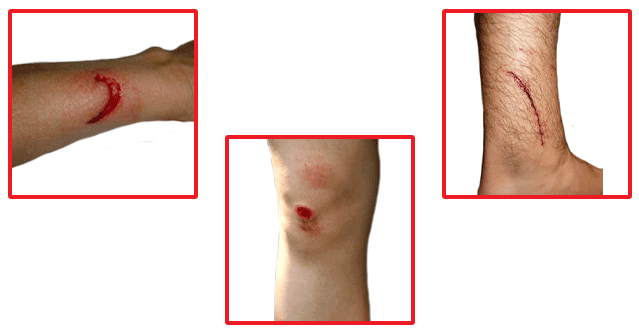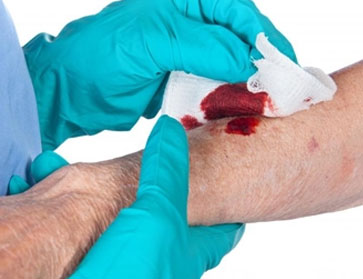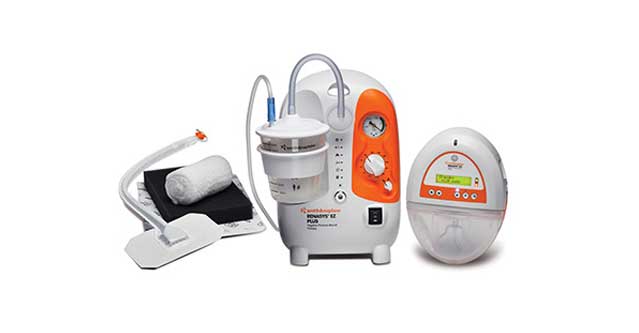Acute Wounds.
Wounds That Heal As Expected.

Acute Wounds, A Wound That Heals Like It Should.
Acute wounds are classified by if your wound heals like it should, or if it takes longer than expected.
When your wound takes longer to heal then normal, than you have a chronic wound.
But...
Most wounds heal in the amount of time they are suppose to, and these are Acute Wounds.
This wound type can vary from minor scrapes on your skin, to deep cuts, or even wounds caused by trauma.
Because of this, you should pay attention to what kind of acute wound that you have.
Cause Of Acute Wounds.
There are many different causes for an acute wound.
Because this is the most common wound type, you can get an acute wound from minor, or even deep lacerations.
There are 2 major types of Acute Wounds.
Surgical Wounds
Surgical wounds are the acute wounds that are created by any surgical procedure done by a healthcare professional.
These wounds are cut precisely with medical tools, and can be closed (sutures/staples/adhesive), or sometimes left open in order to heal better.
- Clean - Any surgical wound that is considered to be uncontaminated, or done in a sterile environment.
- Contaminated - A Surgical Wound that may have possible contamination, but are not yet infected.
- Dirty - Surgical Wounds that have a bacterial infection.
Traumatic Wounds
Traumatic wounds are any injury to the skin and/or underlying tissue. This wound type has 4 different classifications, and is named depending on the object that caused the wound.
- Abrasion - When any surface scrapes, or rubs your skin therefore causing the tissue to tear open. (Knee Scrape)
- Puncture - This is any wound having a pointed object that pokes into the tissue, causing a multi-layered trauma. (Stepping On Nail)
- Laceration -Any wound caused by a hard blow to the tissue, which causes a jagged or irregular wound. (Breaking Your Head Open)
- Incision - A straight edged cut to skin, or tissue that was caused by a sharp object such as a knife. (Cut Finger Cooking)
How To Prevent, and Treat Acute Wounds.
 Preventing acute wounds is best done by paying attention to hazards in your daily activities.
Preventing acute wounds is best done by paying attention to hazards in your daily activities.
For Example
If you're outside riding your bike, ensure that you always have a helmet, and other protective gear on.
Another example is checking your area for hazards, like nails on the ground, holes you could fall into, or even other objects that could potentially injure you.
Simply put, the best way to avoid any acute wound is by being cautious in every day life.
But, as you know we can't be ready for everything that life throws our way...
Therefore if you do get an acute wound, it should be treated immediately.
Here are the steps you should take if you sustain an acute wound.
- Control Bleeding - Find where your wound is bleeding, after apply pressure to the wound in order to stop bleeding.
- Cleaning Your Wound - If your wound is minor, it's best to clean it with basic soap, and water. For wounds that are more serious, it's best to clean it with saline solution.
- Debridement - If needed, you should remove any dirt and/or debri from the wound. Healthcare professionals may remove dead tissue from your wound. (Don't Try At Home)
- Closing and/or Dressing Your Wound - Sometimes you get wounds severe enough that require to be closed (staples, sutures, adhesives) in order to bring the edges of the wound closer, and to heal better. After these wounds are sometimes covered with dressings, or left open, depending on the severity of your wound.
- Antibiotics, and Other Medicines - In order to help fight off infection, heal faster, and reduce swelling you may use medicine. This is especially relevant for wounds that have higher risk of contamination.
Here's How A Wound VAC Heals Your Chronic Wound.

One great way to heal most Acute Wounds is by the use of Negative Pressure Wound Therapy (NPWT) because it increases heal time, and demands less nursing hours.
In a clinical study with 135 patients, NWPT was used to heal Acute, and Chronic Wounds showing "Excellent results together with satisfaction of the patients". Source
Another benefit to using a Wound VAC on acute wounds is that it increases blood flow to your wound, and lessens the chance of infection.
In Conclusion
Negative Pressure Wound Therapy has great benefits for healing many Acute Wounds because it increases blood flow, and decreases chance of infection.
Check Out These Studies On It:
- Evaluation of negative pressure vacuum-assisted system in acute and chronic wounds closure: our experience.
- Negative-pressure wound therapy enhances local inflammatory responses in acute infected soft-tissue wound.
- Negative pressure wound therapy in acute, contaminated wounds: documenting its safety and efficacy to support current global practice.
